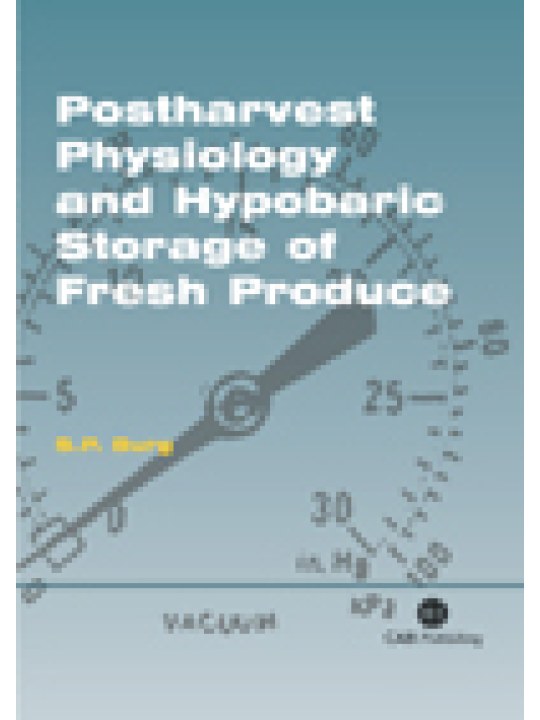Postharvest Physiology and Hypobaric Storage of Fresh Produce
by S P Burg, Retired Consultant, Miami, Florida, USA
Pub Date: June 2004
Hardback
672 pages
Readership
Academics and professionals in horticulture, plant physiology, pest management, meat science, shipping and the food industry
Key Features
• Written by the world’s leading authority on hypobaric storage, this is the first book to provide a definitive account of the process
• Provides the first comprehensive account of post-harvest gas exchange, heat transfer, water loss, and the manner in which these processes affect commodity quality and spoilage
• Critically reviews and eliminates many misconceptions arising from existing post-harvest literature
Main Description
Hypobaric (low-pressure) storage offers considerable potential as a method to prevent postharvest loss of horticultural and other perishable commodities, such as fruit, vegetables, cut flowers and meat. Yet hitherto there has been no comprehensive evaluation and documentation of this method and its scientific basis.
Written by the world’s leading authority on hypobaric storage Postharvest Physiology and Hypobaric Storage of Fresh Produce fills this gap in the existing literature. The first part of the book provides a detailed account of the metabolic functions of gases, and the mechanisms of postharvest gas exchange, heat transfer and water loss in fresh produce. The effect of hypobaric conditions on each process is then considered, before a critical review of all available information on hypobaric storage. This includes horticultural commodity requirements, laboratory research, and the design of hypobaric warehouses and transportation containers.
Reviews
• "Even if you are not interested in hypobaric storage as such, this book has valuable information about mechanisms of gas exchange, heat transfer, and water loss that should be very useful to all those interested in postharvest biology and technology of fresh produce. I recommend it for your library."
Adel Kader
• "This book and its detailed bibliography represent a valuable addition to the existing literature and the author deserves commendation for painstakingly covering the historical and functional aspects of hypobaric storage".
L U Opara, International Journal of Postharvest Technology and Innovation, 1(1), 2006
• "This book is a unique personal perpsective from one of the brightest and most passionate minds in postharvest biology and technology. Both seasoned researchers and students should acquire and use this book as an authoritative reference on both postharvest physiology an hypobaric storage."
Robert Prange, Chronica Horticulturae, 45(2), 2005
Main Contents
• Introduction
• Origins of the LP concept
• Gas and vapour mass transport
• Oxygen, carbon dioxide, ammonia, and cyanide
• Ethylene
• Heat transfer and water loss
• Postharvest diseases and physiological disorders
• Insect quarantine
• Technical difficulties associated with laboratory hypobaric research
• Horticultural commodity requirements
• Meat storage
• Warehouse Design
• Intermodal Container Design
• Conclusions Appendix -Influence of LP on physical, biological and chemical parameters

